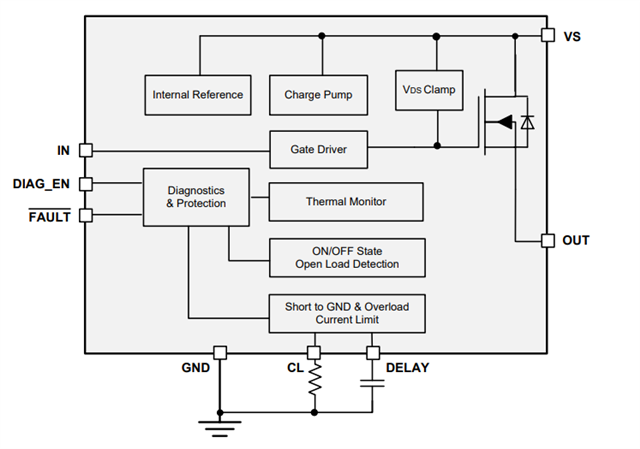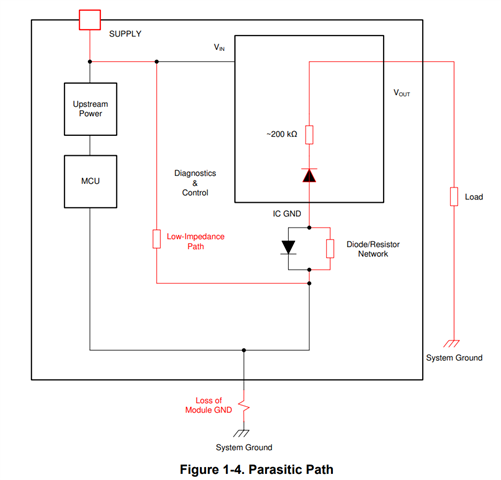Other Parts Discussed in Thread: TPS1H000EVM
Hello,
In our application, TPS1H000-Q1 is used for High side swith, detail block diagram in attached page 1. PIN7 is PWM output and will be connect to vehicle side other ECU.
There is a customer test requirement, the setup show in page 2: The board connect to battery but GND is fload, and the IC PIN7 need to connect to GND. In this test case, we found IC(TPS1H000-Q1) PIN8 and PIN7 burned down.
In order to find the reason, we did page3 and page 4 debug. In page3, cut all input between MCU and IC(TPS1H000-Q1), repeat the test. still found PIN8 and PIN7 burned down. In page4, cut all input between MCU and IC(TPS1H000-Q1) and remove the diode D1, repeat the test, no burned down between pin8 and pin7, meanwhile, both MCU and BUCK are work well, but there is a 2V between IC PIN6 and DC 12V "-" side.
May I know what will be happened during our page3 test? why PIN 7 and PIN8 burned down?
what is the internal connection between PIN7 and GND(PIN6)?



